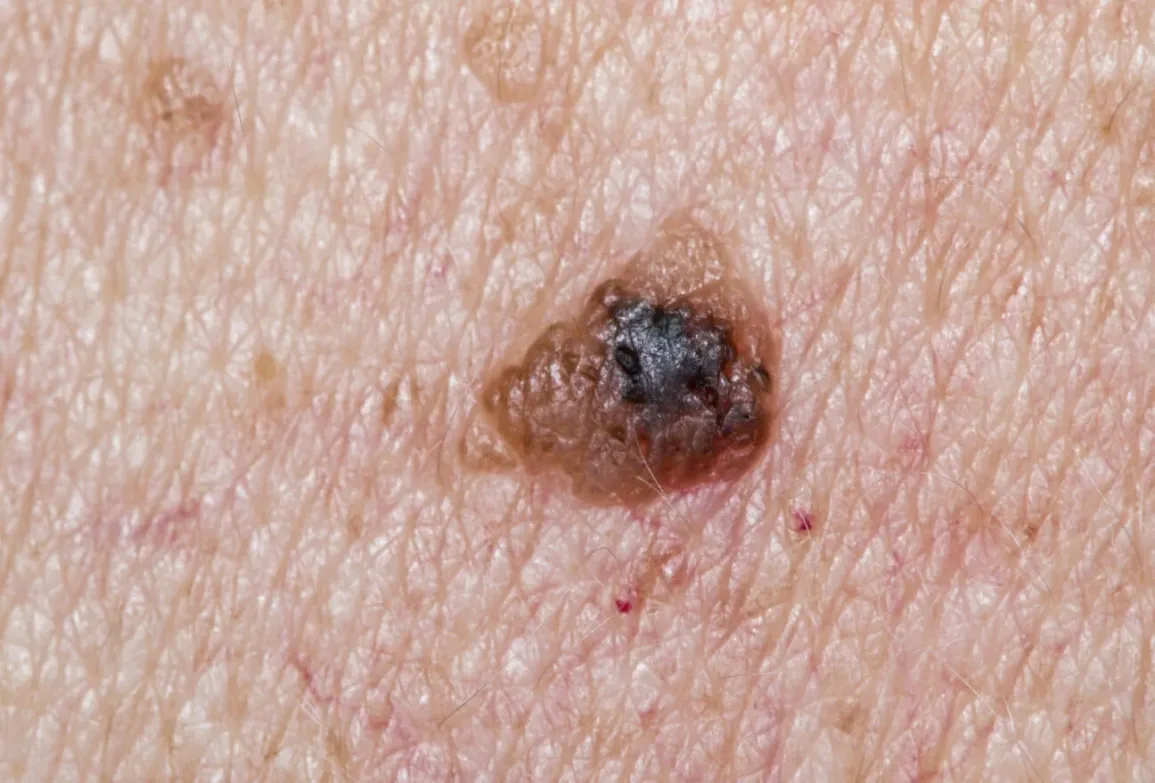Nonmelanoma skin cancers that do not spread are almost always treatable when detected early. So take note if any unusual spots or moles appear and visit your physician if any persist.
When surgery is required, doctors may employ radiation therapy, chemotherapy or photodynamic therapy to kill cancer cells. A flap or skin graft might be used to close any wounds caused by surgery.
Basal cell carcinoma
BCC (Basilar Cell Carcinoma) develops on sun-exposed areas such as the head and neck. It typically appears as a pearly white or pink bump on fair skin; on darker skin types it could appear brown or black, potentially bleeding or scabbing over before necessitating treatment depending on its size and location.
Basal cell carcinomas can often be successfully treated if detected early. Therefore, it’s essential that you regularly inspect your skin and report any changes or any suspicious patches to your physician immediately.
Surgery is often recommended as the first course of action against cancerous tumors, using a scalpel to cut away any diseased tissues from around it (called “safety margins”). For additional protection against cancer cells remaining undetected by standard procedures, another surgical approach called Mohs micrographic surgery, where layers are taken off one at a time may also be performed.
Medicines applied topically can also help treat basal cell carcinoma, including imiquimod and 5-fluorouracil creams that stimulate immune systems while inhibiting an enzyme involved in DNA synthesis called thymidylate synthase. They should be applied regularly over a period of weeks for maximum effectiveness.
Squamous cell carcinoma
Squamous cell carcinomas (SCCs) can often be effectively treated when they’re detected early and treated appropriately, while left untreated they could spread to nearby lymph nodes or organs and worsen quickly.
SCC typically occurs on sun-exposed skin areas such as the face, neck, arms and legs; however it can appear elsewhere such as ears, genitals and lips. It usually presents itself as an unhealed patch that raises, turns red or is scaly in appearance and does not heal over time. People exposed to frequent or extended UV radiation are particularly prone to SCC development while individuals with compromised immune systems, or an inherited disease such as xeroderma pigmentosum may also increase their chances.
Doctors usually treat skin cancer (SCC) via surgical excision, with removal of both the growth and some healthy surrounding tissue to minimize its chances of returning. A technique called Mohs surgery may be utilized for larger or complex tumors to ensure maximum skin preservation; radiotherapy and other forms of therapy may also be considered treatments options.
Melanoma
Melanoma is a type of skin cancer caused when melanocytes develop mutations to their DNA that allow cells to divide faster than healthy ones and cause moles or freckles to change shape, size and color over time.
If melanoma is detected early enough, its chance for cure increases significantly. Doctors use a system known as TNM to classify each case of diagnosed melanoma according to thickness and spreadability.
Doctors use surgery and other forms of medical therapy to treat melanoma. Chemotherapy, immunotherapy or targeted therapies may also be employed to control and prevent further spread. Chemotherapy medications kill cancer cells and can either be given via injection or orally in tablet form – often in combinations such as Cisplatin (Muphoran), Lomustine (Gleostine) and Paclitaxel (Taxotere). Also available may be vinblastine or dacarbazine to address further spread.
Treatment
Your doctor can usually treat BCC that has not spread by cutting it out with electrodessication and curettage (EDC), an outpatient surgery performed under general anesthesia. After numbing, your physician will use a spoon-shaped tool to scrape away tumor tissue while controlling any bleeding; they then kill any remaining cancer cells via electricity or needle; finally leaving behind only a small white scar as evidence of treatment.
In cases where BCC has spread or for those at greater risk, doctors may opt for Mohs surgery – an advanced technique in which layers of normal-looking skin surrounding the tumor are carefully removed while mapping each one for cancer cells before proceeding further.
Other treatments might include radiation therapy that uses X-rays to destroy cancer cells, or medicines designed to stop them from multiplying (immunotherapy). At City of Hope, our patients are just steps from labs where new therapies are developed daily – providing our patients with access to cutting-edge research directly geared toward providing them with care at home. Our truly bench-to-bedside approach ensures they will get care as soon as they need it.







 Adapting Strength Training for Individuals with Autoimmune Conditions and Chronic Fatigue
Adapting Strength Training for Individuals with Autoimmune Conditions and Chronic Fatigue  Gentle Fitness for Long COVID Recovery and Energy Management: A Compassionate Guide
Gentle Fitness for Long COVID Recovery and Energy Management: A Compassionate Guide  The Future of Teledentistry: Remote Monitoring, Consultations, and a New Era of Preventive Care
The Future of Teledentistry: Remote Monitoring, Consultations, and a New Era of Preventive Care  Comprehensive Dental Wellness Strategies for Peri-Menopausal and Menopausal Women
Comprehensive Dental Wellness Strategies for Peri-Menopausal and Menopausal Women  The Intersection of Gut Health, Probiotics, and Acne Management: A Clearer Path to Skin Wellness
The Intersection of Gut Health, Probiotics, and Acne Management: A Clearer Path to Skin Wellness  Acne-Safe Makeup: How to Look Flawless Without Clogging Your Pores
Acne-Safe Makeup: How to Look Flawless Without Clogging Your Pores  Telehealth for Pink Eye: Managing Symptoms Without Leaving Home
Telehealth for Pink Eye: Managing Symptoms Without Leaving Home  Neurocosmetics and Mood-Boosting Skincare: The Science of Feeling Good in Your Skin
Neurocosmetics and Mood-Boosting Skincare: The Science of Feeling Good in Your Skin  Adaptive Fitness Programs for People with Chronic Conditions: Reclaiming Your Strength
Adaptive Fitness Programs for People with Chronic Conditions: Reclaiming Your Strength 